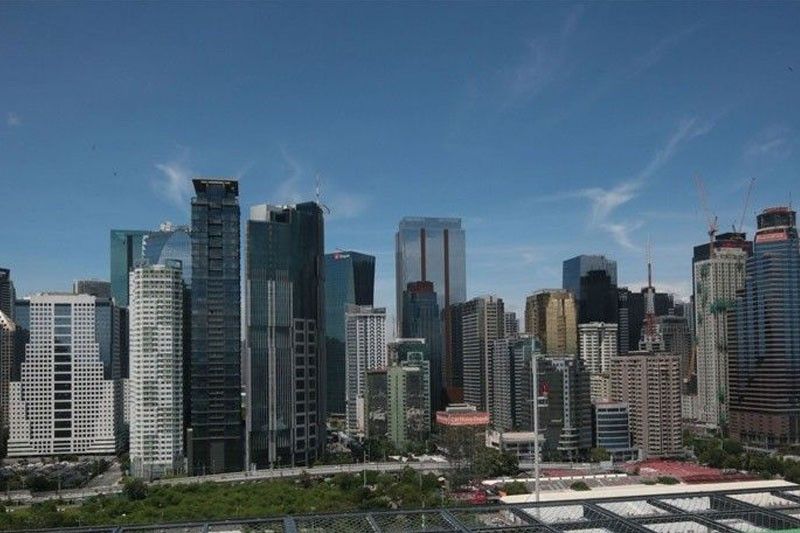S&P hikes Phl GDP growth forecast to 5.8% this year

MANILA, Philippines — S&P Global Ratings raised the gross domestic product (GDP) growth forecast for the Philippines to 5.8 percent this year, from its earlier projection of 5.2 percent, to make it the third-fastest growing economy in Asia Pacific.
Louis Kuijs, chief economist for Asia Pacific at S&P, said the GDP growth outlook for the region has also been upgraded to 4.6 percent from 4.3 percent for 2023, and to 4.7 percent from 4.6 percent for 2024.
“We maintain our cautiously optimistic outlook for Asia Pacific. China’s economy is on track to recover this year. For other economies this will dampen but not offset the hit of slower growth in the US and Europe, the fading impact of domestic reopening post the pandemic, and higher interest rates,” Kuijs said.
The GDP growth forecast for the Philippines for this year is slower than India’s and Vietnam’s six percent, but faster than China (5.5 percent), Indonesia (4.9 percent), Hong Kong (4.2 percent), Malaysia and Thailand (3.2 percent), Singapore (two percent), Australia (1.6 percent), Taiwan (1.5 percent), South Korea (1.1 percent), Japan (one percent) and New Zealand (0.8 percent).
This is also lower than the six to seven percent growth target penned by the Cabinet-level Development Budget Coordination Committee (DBCC).
For 2024, S&P lowered the country’s GDP growth projection to 5.8 percent from 6.6 percent due to the series of aggressive rate hikes delivered by the Bangko Sentral ng Pilipinas (BSP) to fight inflation.
The Philippines managed to sustain its momentum after exiting the pandemic-induced recession with a GDP expansion of 5.7 percent in 2021 due to the lifting of strict COVID-19 quarantine and lockdown protocols, reversing the 9.6 contraction in 2020 when the economy stalled amid the global health crisis.
Last year, the expansion accelerated to 7.6 percent with the full reopening of the economy. This was slightly higher than the government target of 6.5 to 7.5 percent.
“Growth held up better in the more domestic-demand led economies of the Philippines and Indonesia, which also still benefited from the re-opening impact,” Kuijs said.
The S&P economist pointed out that the boost to domestic demand from reopening economies eased toward the end of 2022 as still sizeable inflation and higher interest rates have started to weigh on household spending power.
“That is especially true in the economies with the largest interest rates increase: Australia, Hong Kong, New Zealand and the Philippines,” Kuijs said.
The BSP has so far raised key policy rates by 425 basis points to tame inflation and stabilize the peso that slumped to an all-time low of 59 to $1 last October. This brought the benchmark interest rate to a 16-year high of 6.25 percent, from an all-time low of two percent.
Inflation averaged 8.6 percent in the first two months of 2023 after accelerating to 5.8 percent last year, well above the BSP’s target range of two to four percent, from 3.9 percent in 2021. Core inflation quickened further to 7.8 percent in February from 7.4 percent in January despite the slight easing of headline inflation to 8.6 percent from a 14-year high of 8.7 percent.
“Pronounced core inflation in India and the Philippines suggests little slack in these economies. Indeed, we consider these gaps basically long-term output losses; the gaps don’t close in our medium-term projections,” Kuijs said.
According to Kuijs, the Philippines, Australia and New Zealand are more prone to rate increases because of elevated core inflation.
“Adding up the domestic and external considerations, we expect the largest further rate increases this year to occur in New Zealand, the Philippines and Thailand,” he said.
S&P sees inflation accelerating further to 6.2 percent this year before easing to 3.2 percent in 2024.
It expects another 25-basis point hike this year to bring the overnight reverse repurchase rate to 6.50 percent before a series of rate cuts that will reduce the benchmark rate to 4.75 percent by next year and to four percent by 2025.
- Latest
- Trending

























